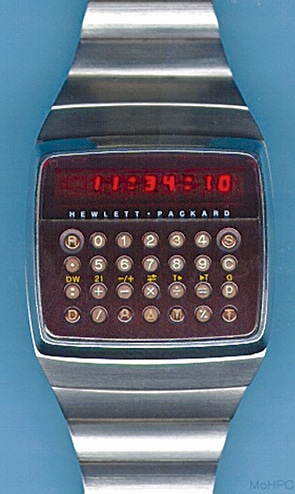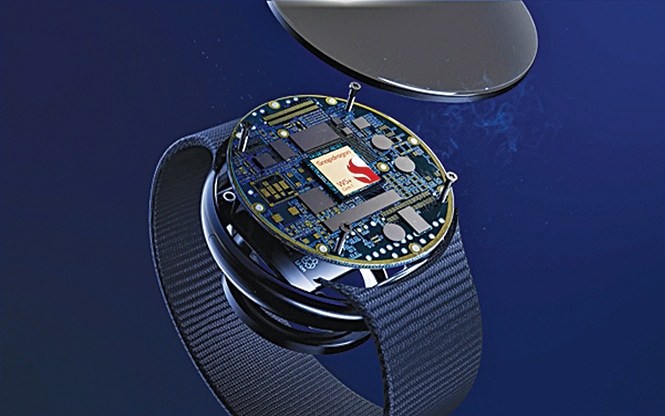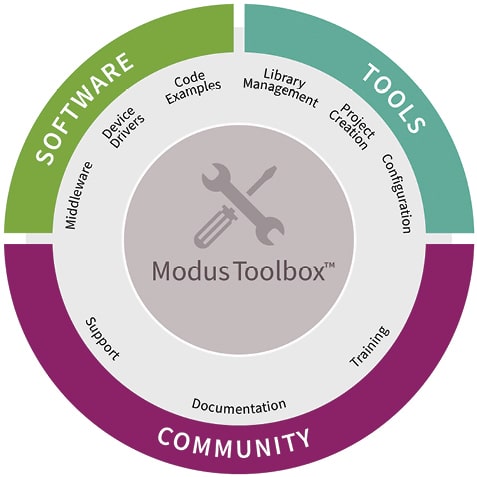When wearables first came out, fitness trackers and smartwatches dominated the market. With so many fresh and inventive products being developed, this is no longer the case. As complexities and user requirements increase, the most pressing decision for any designer is the selection of a controller.
Simply speaking, a wearable is any device users can place on their bodies. These frequently function as replacement for or integration with already-existing accessories like watches. Thanks to the Internet of Things (IoT) technologies this market sector is expanding at a meteoric rate. In addition to the consumer market, the medical sector is driving demand for gadgets that track bodily processes and diseases. From smartwatches, bands, glasses, and rings to e-textiles, tattoos, and stickers—all come under the category of wearables.
Selecting the right controller
The microcontroller is the most crucial electronic part of wearable technology. It must be able to address all requirements of a wearable device, the most important ones being low power consumption, ability to communicate wirelessly, and compact size. The controller frequently needs to support a variety of wireless protocols, including Wi-Fi, ANT+, Bluetooth Low Energy (BLE), and proprietary IEEE 802.15.4 based protocols. In some cases, the equipment has to handle multiple protocols.

Microcontrollers that can combine the majority of functions into a single chip may support the majority of wearable devices. In general, the 32-bit ARM architecture offers good performance and energy efficiency. Still, it pretty much depends on your needs and requirements. Here are some things you need to keep in mind while selecting the right chip for your application.
| The first wearable |
| The first wearable technology with a significant mass market influence is thought to be the Hewlett Packard HP-01. Although it was marketed as a calculator wristwatch, it also displayed other things, including the day of the week, alarm, timer, stopwatch, calendar, and time of day. Using the watch, one could know the time, figure out how much a long-distance call would cost, calculate distances, and much more on the go. All these features were available as early as 1977. The price of the watch in today’s money was almost $3000. |
Size and form factor
Many common controllers for wearable devices are quite compact, and these need to be in order to conveniently attach to a wearable. The controllers must, however, simultaneously include more features into the same area. The minimal feature size of the technique used to fabricate the silicon system on chip (SoC) is a crucial aspect to pay attention to. The smaller the feature size of the silicon wafer, the denser the chip will be. Therefore, more features and functionalities can be crammed onto a single chip.
Low power consumption
Reducing the power usage of wearable technology presents particular difficulties because many gadgets are battery-powered. As majority of wearable gadgets are monitoring devices, they must always be on, unlike other mobile devices that users can turn on manually when needed. To preserve battery life, wearables must run at an extremely low power. This demand creates unique requirements for the controller and firmware algorithms.
A way to tackle this issue is to offload the processing power to the cloud using a mobile or web application. In the case of a mobile application, which is more common, Bluetooth is a great way to ensure connectivity between the wearable device and your smartphone.

In terms of hardware, there are many controllers that work on extremely low power. A good example would be the PSoC family of programmable microcontrollers. These are recommended because they utilise the strength of the ARM architecture by combining an ARM Cortex-M core with advanced analogue and programmable digital capability on a single chip.
Qualcomm, in July 2022, unveiled their latest chips for wearables—the Snapdragon W5+ Gen 1 and the Snapdragon W5 Gen 1. According to Qualcomm, these chips have been designed to advance ultra-low power and breakthrough performance for next-generation connected wearables with a focus on extended battery life.
Co-processor and multicore processors
To offload the processing of sensor data from the main CPU, certain cutting-edge devices have a separate co-processor. This is necessary when the device needs to examine a lot of sensor data simultaneously in real time while demanding constant CPU attention.
Not just the sensor data, many wearable devices actually have co-processors or DSPs for specialised applications like AI and ML, so that these things can also be done on the edge. As mentioned above, the Snapdragon W5+ Gen 1 and the Snapdragon W5 Gen 1 chips have an ML co-processor (Arm Ethos-U55).
Similarly, Renesas’ DA1469x product family contains three new cores that provide more resources, range, computing power, and battery life—allowing designers to push the boundaries of applications like wearables. In June 2022, Renesas also launched the SmartBond DA1470x family of SoCs. It is a multi-core system with CM33F as the main application core and CM0+ as the sensor node controller. They claim that this is the world’s first SoC to offer a very high level of low power integration and is best suited for wearable medical devices.

Security and development environment
Modern wearables—especially medical monitoring devices—deal with a lot of sensitive data, like biometric information, and then transmit this wirelessly. To protect user data, these wireless connections must be private and secure. A strong yet simple-to-implement security framework is a very crucial feature in microcontrollers.
Furthermore, a comprehensive development ecosystem makes it easier for developers to integrate different operating systems and software for a nicer, smartphone-like experience for wearable devices. For example, NXP’s i.MX RT microcontrollers provide built-in security features, including secure boot, one-of-a-kind key storage, and hardware acceleration of symmetric and cryptographic algorithms to help protect smartwatches and other wearables from being hacked. A good development ecosystem is also necessary for integrating all the necessary features during the development process. It needs to offer all the GUI based tools, firmware, middleware, APIs, and comprehensive documentation. One such development ecosystem is the ModusToolbox from Infineon. It is a collection of libraries and middleware hosted on GitHub, along with an IDE and toolkit that is downloaded and installed on your machine.
PWM and the need for an AFE
Pulse width modulation (PWM) is used to create a number of effects, including LED dimming, vibration for haptic feedback, and much more. If used in firmware, these strategies call for precise timing and regular CPU attention. Choosing a CPU or controller that supports hardware PWM is crucial.
Second, a lot of sensors used in wearables are analogue sensors, especially those used in biomedical applications that measure heart rate. A unique component, known as the analogue front end (AFE), is necessary for analysing data obtained from analogue sensors.
Op-amps, filters, and ADCs are used in an AFE to condition and transform the analogue signal into a digital signal that the CPU can handle. At times, some controllers have an AFE integrated into them. Microchip’s PIC32CM LS60 family of microcontrollers that were launched in May 2022 actually have ADCs, DACs, and op-amps, which are the features of an inbuilt AFE. Hence, these controllers are best suited for wearable electronics.
|
Controllers for a prototype/MVP level application
|
| If your product is in the R&D phase, wherein your team is working on prototypes to generate a minimum viable product (MVP), you can consider some development boards that are suitable for prototyping. Later, once you have established the product’s features, you can move on to a more specialised controller.In fact, vendors like Adafruit actually offer ready-to-use microcontroller platforms that you can use to build a wearable device. The Adafruit FLORA platform is one such example. It’s a circular, sewable microcontroller that works with Arduino. The Lilypad Arduino is a similar open source platform. Using conductive thread, it can be attached to fabrics and linked to other electronic components, and hence, it is suitable for e-textiles. |
Some trends to look out for









